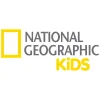Take a look inside 11 images
National Geographic Kids
Pros: An amazing array of learning resources from a trusted, expert brand.
Cons: Teaching resources and search options are limited, and the quality level of games varies.
Bottom Line: Large collection of approachable, fun multimedia resources about animals, habitats, countries, and cultures.
While National Geographic Kids isn't well organized for teachers, it's a fantastic resource for students to use to explore their interests and follow their curiosity. Though it isn't a comprehensive site and has some gaps in the animals and countries it covers, its offerings keep expanding. The site would be a great way to introduce the diversity of life on Earth: Encourage students to learn about new animals, watch the various science and geography series, or explore the U.S. states or countries of the world. The Homework Help section can provide additional assistance with light research papers or projects. Teachers can also search for resources that match topics they're working on in the classroom.
Teachers of younger students will find this educational tool a great way to increase engagement and add extension activities for science and social studies lessons. There are also closed captions on videos for accessibility purposes. Note: Though the site content is free, there are a number of links to subscribe to the National Geographic Kids and National Geographic Little Kids magazines, as well as a link to the National Geographic store.
By building on National Geographic's reputation for breathtaking photography and in-depth reporting about the world's cultures and exotic wildlife, National Geographic Kids provides an overwhelming number of high-quality visual learning tools that focus on the natural world and on world cultures. Profiles of animals and countries include videos, photos, maps, and facts. Videos are brief (one to five minutes) and include excerpts from National Geographic's nature films and themed exploration and information shows. The reading level is probably too advanced for the youngest readers but might provide some motivation for reading instruction in class.
In the extensive animal section, students can browse for animals by type of animal, discovering animal species from the luna moth and desert tortoise to the caracal and wolverine. Listings give overview information, scientific name, habitat, range, endangered status, and plenty of other details. Informative articles add more utility to the site's offerings, and students can travel the world and the United States through the country- and state-specific entries. Along with the more traditional educational material, National Geographic Kids also has a games section that allows students to explore topics such as code breaking, national parks, settling in Jamestown, recycling, Greek gods, and, of course, animals. There are also sub-sites for Nat Geo Kids book series, such as Explorer Academy and Zeus the Mighty, along with focused education topics. Keyword searches can uncover resources like crafts how-tos, learning about gemstones, and plenty of science experiments.
Some standouts include features like Funny Fill-Ins games; video series like Weird But True!, Best Job Ever, and Try This!; deeper dives into topics such as Native Americans, African American Heroes, and Women Heroes; and a Kids vs. Plastic section encouraging plastic-free crafts with downloadable toolkits.
The National Geographic Kids site is easy to browse and is filled with fun and fascinating resources for students, though some of the material isn't logically organized and may be difficult to discover. Clicking on menu options at the top of the screen takes you to a related page, but hovering over that same option provides additional possibilities that aren't accessible if you just click. Keyword searches and teacher-provided links will come in handy here. For instance, the site includes resources like a Homework Help area that teaches students how to be an expert fact-checker, write an animal report, and more, but it's not entirely clear how to get there unless you search for it directly. And there are hubs for Women Heroes, Native Americans, African American Heroes, and U.S. Presidents, and other resource articles on topics such as the U.S. government and the coronavirus. Younger kids will be excited about the "Moment of ..." content that includes moments of "aww," "huh?," joy, "eww," and more. Most of these areas aren't directly accessible from the main menus, however, and might be overlooked.
A number of in-depth sections include video series or themed articles, along with countless educational photos and videos, articles for deeper learning, and activities for use offline. Allowing kids to browse on their own in addition to using the site for targeted lessons or homework help keeps students engaged and guiding the direction of their own learning, making for lifelong learners.
The section on animals really shines, with many specific animals to study, especially mammals. Students are bound to find a favorite creature among the hundred or so profiled. For social studies lessons, the site also profiles dozens of countries all over the globe -- along with U.S. states -- with entries that are objective and informative, designed to captivate students with images, maps, and videos. National Geographic has created a one-stop shop for elementary and middle school kids interested in the cultural or natural world. The main page also links to the parallel Nat Geo Family site filled with ideas for parents to help kids explore their world.




















